The Italian director Federico Fellini is best known as one of the central figureheads of the post-world war 2 art cinema. In fact, his art house “hits” La Dolce Vita (1960) and 8 1/2 (flanked by his contribution to the portmanteau film Boccaccio ’70), are arguably the most iconic representatives of art cinema, along with his compatriot Michelangelo Antonioni’s trilogy L’Aventurra, L’eclisse, and La notte, Ingmar Bergman’s The Seventh Seal and Wild Strawberries, and Alain Resnais’ Hiroshima, mon amour and Last Year at Marienbad. The lineage from neorealism, to art house, to “Fellinian” has been amply charted by scores of film writers, but my interest in this primarily photographic essay is to chart a lesser noted lineage: a two-street of sorts between Fellini and Italian horror.
Employing a running series of frame stills (taken from DVDs and BDs), my aim here is to reveal a surprising symbiosis between one of Italy’s most revered directors and one of cinema’s most despised (at least by a section of conservative and mainstream critics) genres, horror. The point here is not to suggest that Fellini is a horror auteur, but that his richly veiled visual and aural style, stretching from neorealism to surrealism to expressionism to grotesque caricature, often borrows from horror film imagery and iconography; while in turn has been inflected back to the horror genre in surprising and unexpected places. My aim here is also to try something different as a critical form, and essentially let film images speak for themselves, with a minimum of explanatory text to give a brief context for the comparative frame grabs.
Fellini and Mario Bava
I’ll begin by noting the one parallel between Fellini and horror which has often been made by many critics: the influence of Bava’s spectral blonde haired girl as an icon for evil in Kill, Baby Kill on Fellini’s depiction of the devil as a similar blond-haired girl in his segment of Spirits of the Dead, “Toby Dammit, or Never Bet the Devil Your Head.”

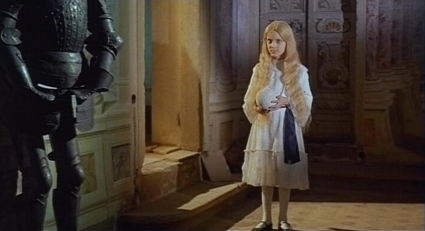

Killy, Baby Kill



Toby Dammit
However, this often-cited influence is left for debate when one notices that Fellini used a similar blonde-haired girl in Juliet of the Spirits,
in a flashback to Juliet as a child at the circus. Albeit in this case
the girl is not a literal ghost, but more of a spiritual phantom for the
mature Juliet’s mid-life crisis. The position of the little girl’s hand
on the screen is also reminiscent of the iconic hand on window gesture
from Bava’s Kill, Baby Kill, making the precise direction of the influence tough to call (although Fellini is on record stating his admiration for Bava’s Kill, Baby Kill). Fellini’s image of a burning angelic girl, or more literally a girl burning in hell, from the end of Spirits also bears the stamp of the horror genre.

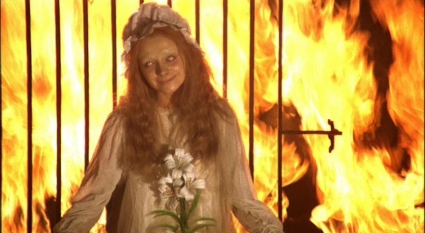
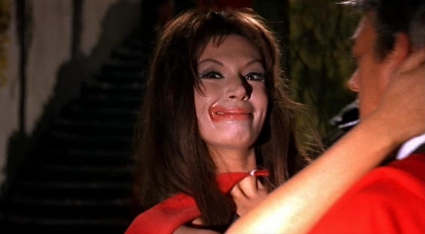

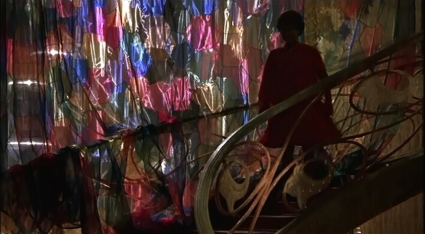

Juliet of the Spirits


Suspiria
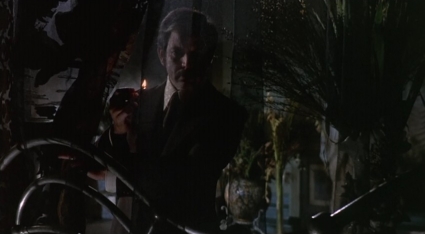
Lisa and the Devil
The use of saturated reds and blues which is such a cited aspect of Suspiria (and Inferno) can also be traced to Fellini’s Roma, 1972:

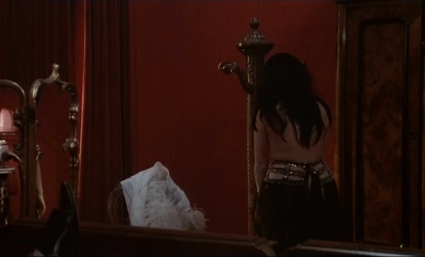
Fellini’s Roma


Suspiria
The influence is also evident in the set design and art design in
Fellini and Argento. The striking use of monumental, marble foyers and
art deco styled furniture carries across from Fellini’s Juliet of the Spirits and Fellini’s Roma to Suspiria:
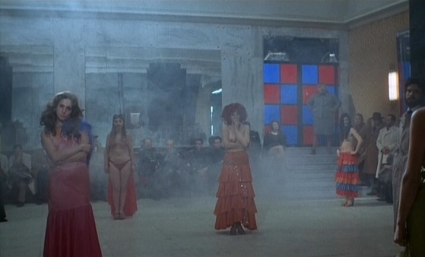
Fellini’s Roma


Suspiria
Within these overwhelming spaces often reside powerful matriarchs, sometimes butch looking, which we can see in Fellini’s Roma and Suspiria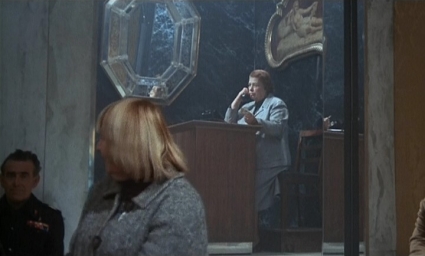

Fellini’s Roma

Suspiria
The striking peacock which adds a colorful yet disquieting affect to the climax of Suspiria can be traced back to Fellini’s Roma.


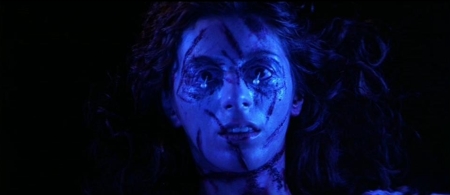


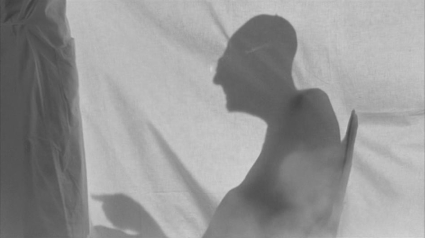
8 ½
The eerie effect is lifted and tweaked by Argento for the famous makeshift dormitory sleep-over scene in Suspiria.
In the scene the owners of the ballerina school set up a large
camp-like tent in the middle of the gymnasium as a makeshift dormitory
for the girls to sleep in while their rooms are being fumigated. During
the night a few of the girls are visited by a demonic presence seen only
in silhouette through the red and green lit curtains. 


Suspiria
With its dark fairy-tale quality Juliet of the Spirits seems to also have been an influence on Bava’s Alice in Wonderland flavored Lisa and the Devil,
especially the baroque mansion where much of the disorienting events
occur for the lost Lisa character. For both women, Juliet and Lisa, the
trip into the mansion is literal for the viewer but figurative for the
characters, who are stepping into a twilight zone of shifting time
frames, ‘living dead’ or ‘living mannequins’ (Lisa) and Jungian psychic
formulations (Giulietta). 

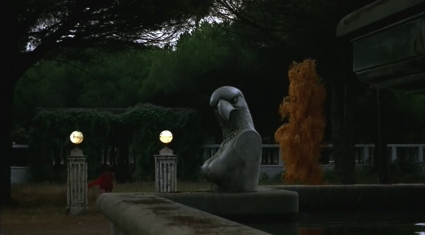
Juliet of the Spirits



Lisa and the Devil
One of Bava’s pet horrific tropes is bringing the inanimate to life,
or animating inanimate objects such as dolls, mannequins, and corpses.
Such imagery works at an unconscious level of primal fear, invoking
Freud’s famous theory of the “uncanny” or the ‘un-heimlich” (the strange
made familiar). In Freud’s essay “The Uncanny” he argues that in our
psychic development we block unpleasant memories, primitive beliefs,
desires, but when we see something that reminds us of this repressed
memory, we get the noted strange uncanny feeling, the strange made
familiar; as the repressed emotion attempts to crawl back into our
consciousness, we become attracted (pulled to it) but afraid (push
away) because it is “uncomfortably strange”. Freud mentions two
formulations of the uncanny: 1) reviving a repressed emotional impulse (scary or not, a return of the repressed)
2) something that suggests that magic, animism, or the irrational is true (a doll)
The use of inanimate objects was key for Freud in evoking the uncanny because they relate back to our infanthood, when we were not able to always distinguish between the animate and inanimate. Seeing life in stillness, animism, is a key in many Bava films, with ghostly wind knocking over furniture in Kill, Baby Kill, the corpse coming back to life like a mummified mannequin in the story “A Drop of Water” from Black Sabbath, and a host of inanimate objects seemingly coming to life across many films, from mannequins, to armours, to chairs, to dolls, to balls.

“A Drop of Water”
One of the most terrifying images of the uncanny I can recall comes, however, from Fellini’s Juliet of the Spirits,
in the shape Giulietta’s mother, played by the statuesque Caterina
Boratto. The domineering mother appears in her ‘normal’ human form in
several scenes (although always larger than life compared to the
diminutive Giulietta), but during the fiery climax, where Giulietta
encounters the real and psychic figures of her life as “spirits of the
dead” the mother appears to her as a monstrous corpse-like mannequin. 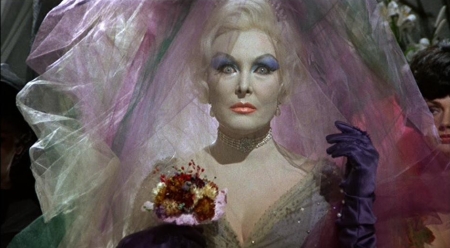
Bava used the “horrifying” corpse as mannequin effect conventionally in the noted “A Drop of Water” climax, but would also use it in more subtle and sophisticated ways, such as the opening credit scene of Blood and Black Lace, where he places haut couture fashion models (lead characters soon to be victims) opposite their mannequin doubles:

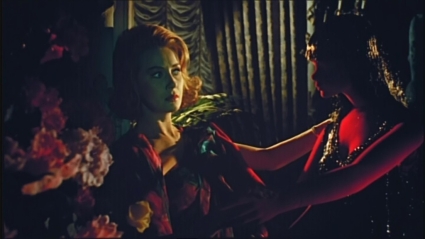





Mannequin to human
One of the most satisfying and surprising finds I have encountered
in my research on Fellini and Italian horror was facilitated by the
fascinating documentary on the recent Criterion Blu-Ray release of 8 ½, The Last Sequence,
a new 52 minute documentary that digs into the lost alternate ending of
the film. Although there is no remaining footage of the ending, the BD
includes set photographs and interviews with key actors and crew who
were on the set, remembering details of the alternate ending. From these
accounts the alternate ending consisted of Guido embarking a train,
which he slowly learns is populated by phantom spirits of key figures of
his life. The actress Claudia Cardinale remembers that they were all
supposed to be dead, that there was no dialogue, and that it felt like a
sort of dream. Actress Anouk Aimée, recalls: “We were dead or
something. There was a sense of death there.” (18’55”, BD). Tullio
Pinelli, screenwriter, adds, “I remember this train, travelling along,
full of spirits or phantoms dressed in white. It left me with a tragic
feeling, like a funeral.” 
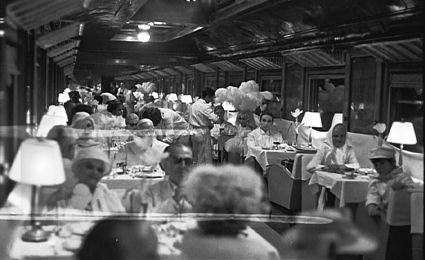
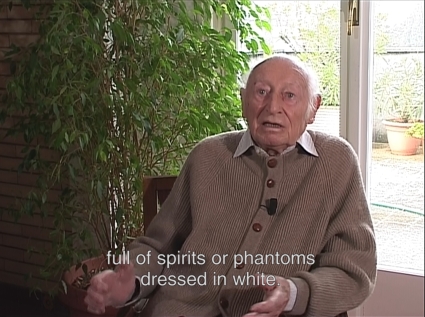
Tulio Pinelli
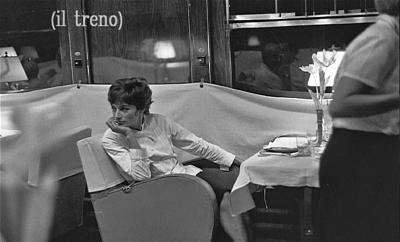
Anouk Aimée







Nights of Cabiria


The Antichrist
The soul in battle in The Antichrist is a mentally
troubled, paralyzed woman named Ippolita (Carla Gravina), who becomes
possessed by an ancestral heretic nun and begins to act like a
nymphomaniac on acid. The make-up, hair-style, body gyrations and
delirious expressions of Ippolita in her possessed state are uncannily
similar to a composite of the mannerisms of the psychic seer that
Giulietta visits, Pijma (Valeska Gert), and one of the women at Suzy’s
hedonist palace.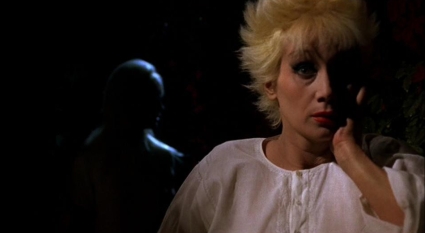

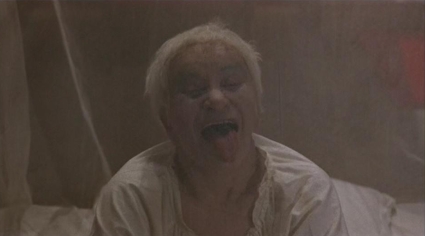
Juliet of the Spirits




The Antichrist
I would like to conclude with a few more isolated examples of this
surprising parallel between Fellini and the horror genre. The appearance
(in the literal and figurative sense) of certain Fellini performers
shows a continuity with the horror genre, starting with the British
actress who went on to have a formidable career in Italy as an iconic
Scream Queen, Barbara Steele. Steele’s breakthrough horror role came in
the dual role she performed in Bava’s Mask of Satan / Black Sunday,
1959, as Katia and Asa Vajda. Fellini, a lover of remarkable faces,
hired Steele to play Mario Mezzabotta’s (Mario Pisu) trophy girlfriend
Gloria Morin in 8 ½. 

Bava, top, Fellini bottom
For the Poe-based story “Toby Dammit” in Spirits of the Dead
(1968) Fellini used the young, handsome Terence Stamp, who was coming
off a run of six or seven strong English films, to play a British
super-star in Rome to promote work on his latest film, a “Catholic
Western.” To transmit the look of a harried, disinterested actor,
Fellini had Stamp dye his hair a bleach blond which not only echoed the
blond hair from the women in Juliet selected above, but more tellingly, Vincent Price in his role of Roderick Usher in Corman’s House of Usher, 1960. Stamp’s hair and make-up also suggest that Fellini was thinking more directly of Poe himself.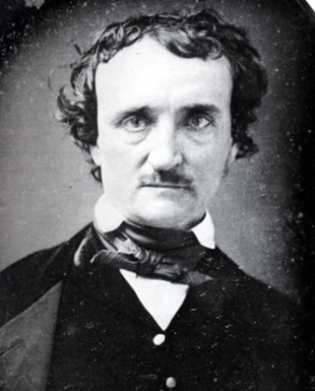

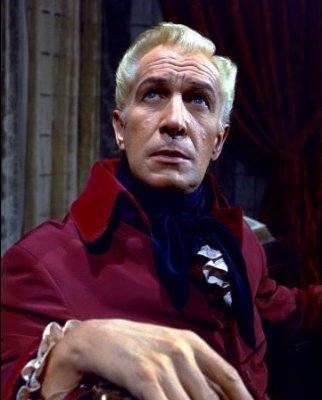


Top to bottom, Poe, Price, Stamp
The Temptation of Dr. Antonio, from the 1962 portmanteau film Boccaccio 70,
was Fellini’s first foray in color. For his contribution Fellini cast
the great comic actor Peppino De Filippo as the arch conservative Dr.
Antonio Mazzuolo, who begins a one man crusade against a park billboard
advertising milk through the well-endowed physiognomy of actress Anita
Ekberg. His own repressed sexuality results in a delirious hallucination
where he is chased, King Kong style, by a 50 foot Ekberg.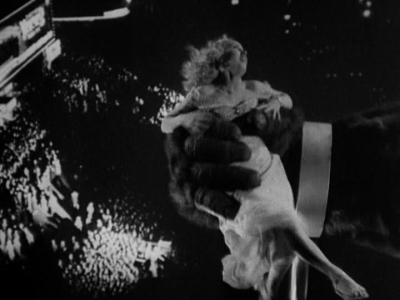



Dellamorte Dellamore
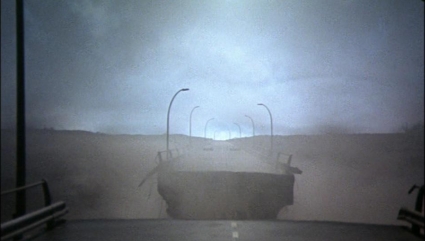

Toby Dammit
About Donato Totaro: Donato Totaro has been the editor of the online film journal Offscreen
since its inception in 1997. Totaro received his PhD in Film &
Television from the University of Warwick (UK) and is a part-time
lecturer in Film Studies at Concordia University (Montreal, Canada). He
has published on recent Asian cinema, the cinema of Andrei Tarkovsky,
the horror genre and is currently preparing a manuscript entitled Time and the Long Take in Narrative Cinema.








No comments:
Post a Comment